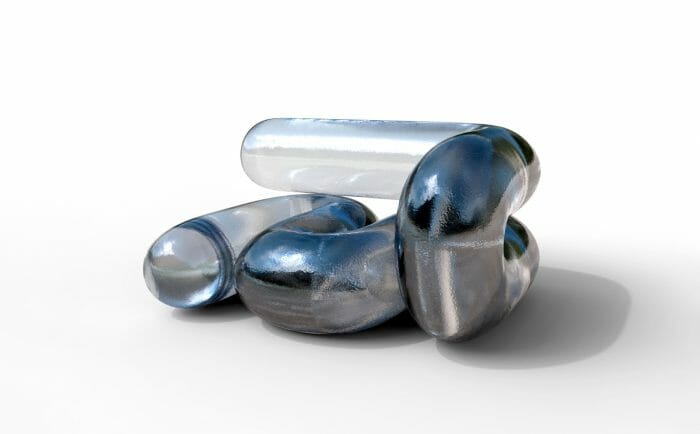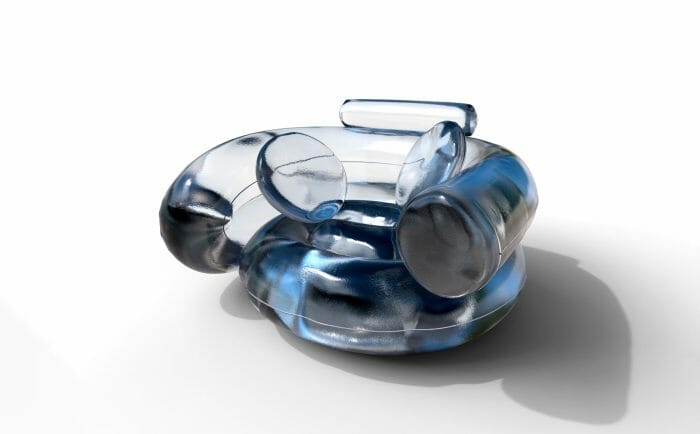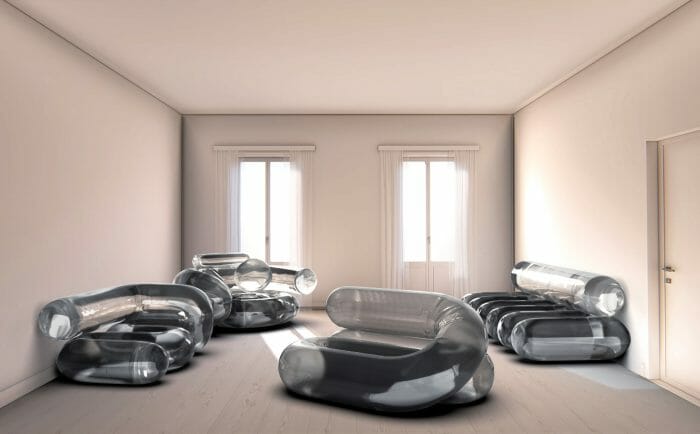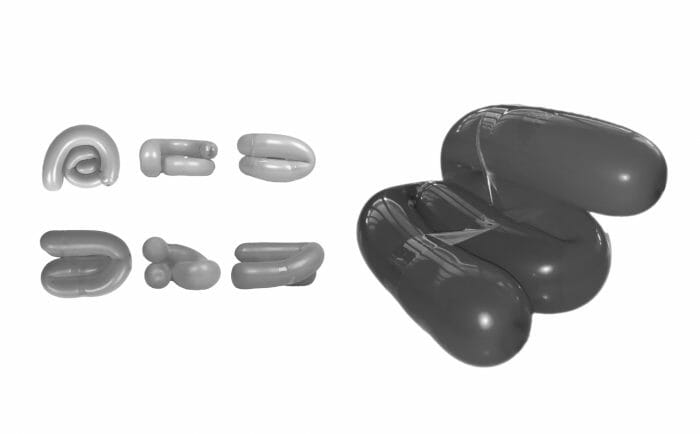Introduction to Design - Blown Collection
Course:
Product Design
Lecturer:
Sebastian Renga
Year:
Second year
Students:
Michele Bellinaso
Gianluca Bergo
Beatrice De Anna
Giulia Canal
Alexander Viola
Brief
Development of a re-interpretative or experimental product project thesis. The project should respond to the characteristics of the selected company and enhance its identity, respect its production limits and consider contemporary socio-cultural aspects.
Company Description.
Zanotta was established in Nova Milanese in 1954 by its founder Aurelio Zanotta. At the beginning of its opening it focused on the production of sofas and armchairs, while over time its collection became more varied, including products such as furniture complements, chairs, tables and beds.
Its production is characterized for being 100 percent Made in Italy. In Zanotta’s collections, the pieces featured are often icons of Italian design and made by renowned figures.
The company is known for managing to maintain a close relationship between tradition and innovation. The products are famous for their “timeless” style and the use of technological innovations in a smart and reasoned way. Many of them are exhibited in various museums around the world. Zanotta items are designed to fit into any kind of context and without claiming membership in a style.
One of their focal points, is to make objects that play a lot on irony both in their style and in their use of material. In fact, Zanotta was involved in promoting and supporting the radical design movement, where in this current the designs combined avant-garde and Italian style, which stood out from the rest of the world.
Product types identified
An assumption that still remains valid, and which sees “beautiful, usable and durable” as the goal that everyone seeks in today’s design, and which Zanotta considers indispensable for the objects in its collection, each of which is intended for everyday life. Specifically, Zanotta’s catalog touches on design supply products related to the world of living such as sofas, armchairs, chairs and stools; now products for the dining area such as tables, consoles up to a production dedicated to the design of desks, beds and bedside tables for the sleeping area.
In its catalog, Zanotta, also boasts the “Edizioni” collection: sixteen of the most eccentric and iconic design products fueled by close dialogue with contemporary art.
Chairs, cabinets and small tables signed by the great designers of radical design such as Bruno Munari, Ettore Sottsass and Alessandro Mendini are now produced by the Nova Milanese company by placing on the market in small and limited series, objects dedicated to those who know how to distinguish originality from replicas.
To date, Zanotta’s catalog, on the other hand, does not touch product categories such as bookcases or lamps, also focusing little attention on garden or outdoor furniture.
Among Zanotta’s most historic and iconic productions is the inflatable Blow armchair, designed in 1967 by Jonathan De Pas, Donato D’Urbino and Paolo Lomazzi.
Italy’s first pneumatic design object, a symbol of the new free and light style of radical design, designed for indoor and outdoor furniture. Despite the fact that the armchair is now out of production, Blow is still considered an icon-object of Pop design and, as a symbol of the legendary Sixties, it is taken to represent the spirit of provocation and rupture and the socio-cultural changes of those years, as well as being a confirmation of how Zanotta has combined over time research and promotion of experimental products for an evolved public, never neglecting that touch of irony that has always distinguished the company. Fifty-five years after the birth of Blow, the breath of fresh air brought by the DDL studio design signed by Zanotta is still timeless.




Materials
In terms of materials, Zanotta uses the principle materials of large-scale industrial production in its objects, such as metal tubing, colored leather, and plastic laminates, taking this concept to the extreme with the castiglioni brothers, who integrate pieces of other existing products into their products, thus minimizing production costs and maximizing accessibility by the public.
Also exemplifying this is the sack chair, which turns precisely to industrial waste to create an armchair that is as comfortable as it is simple and inexpensive (at least before it became iconic).
Materials List:
- die-cast metal
- metal extrusions
- glass
- marbles
- natural and colored skins
- synthetic and natural fabrics
- wood

Colors
Most famous for the collaborations established with the main actors of the postmodern revolution in Italy, Zanotta has always been characterized by the use of saturated and garish flat colors, typical of this very period, which, however, it still incorporates in many of its products.
Also important from an identity perspective is the extensive use of dyes not derived from paint but loaded directly into plastics, a trait typical of the exaltation of new technological possibilities in Italian industry in the early 1970s.

General line of Zanotta production
Zanotta’s production focuses, as their focal point, on the quality of workmanship and materials used; they have been carrying forward the value of Italian craftsmanship in the world for years.
They are distinguished from the rest of the furniture companies by the sharp contrast between the innovation proposed by the articles and the traditionality of their production chain, which is mainly related to leather and textiles.
However, upgrading production chains with more modern systems has also taken place in their factories: indeed, it is common to see in their products, metal processing such as die casting, two-dimensional roller bending or three-axis bending on CNC machines.
As for polymers and composite materials, Zanotta applies processes such as injection molding and, again, die casting. Many products also take advantage of multilayer plywood, which is shaped using lamination techniques so as not to undermine the integrity and resilience of the piece. The design of Zanotta’s products and based on conscious and intelligent design, this saves money in the production and engineering phase of the products and, as a result, allows us to invest much more in everything related to the quality of materials and details.
Ethical issues and sustainability
Zanotta, on the product side, in every design, production and distribution activity pays attention to the environment, with awareness, attention and research on this very sensitive issue.
Over the years, the company has implemented strategies aimed at reducing the environmental impact of its production facilities and processes.
Their goal, at the Nova Milanese production site, would be to achieve ‘zero emissions’-in air, water and soil.
The innovation and attention paid on the eco-sustainable theme is represented by the symbol SACCO GOES GREEN, which is not an end in itself, but the beginning of a new path of research and experimentation on recycled materials and biomaterials.
Sacco, designed in 1968 by architects Gatti, Paolini and Teodoro, put into production in 1969 by Zanotta.
The padding, in the green edition consists of BioFoam® microspheres from Synbra: a bioplastic (PLA) obtained from sugarcane, comparable to and replacing EPS (high-strength expanded polystyrene) in terms of structure, properties and technical performance.
The covering, the casing is made from ECONYL®, a regenerated nylon thread made from fishing nets, fabric scraps and industrial plastics.
The thread can be regenerated, recreated and remodeled endlessly without using any other natural resources of the Planet.
We therefore note that as early as ’68, the company wanted to assimilate
and engineer itself into the eco-sustainability theme.
However, we realize by analyzing the products sold by Zanotta that, primarily, their experimentation, research and development focuses on the factors that determine the long life of a piece of furniture.
They are certainly pertinent to the basic principle of “good design” that leads to reasoned choices, also eco-sustainable but above all with important values and qualities such as: disassemblability, ergonomics, choice of non-toxic and hypoallergenic materials, recyclable and not subject
to rapid obsolescence, use of standardized testing techniques for resistance, functionality and durability of products.
As they themselves confirm, therefore Zanotta practices usable, ethical and sustainable design, aimed at the care and definition of the research of design synthesis. Italian quality, linked to the prestige of an authentic Italian piece, meticulous attention to detail and finish, functionality, comfort, safety and durability, have always been distinctive and recognizable features of the Zanotta brand.

